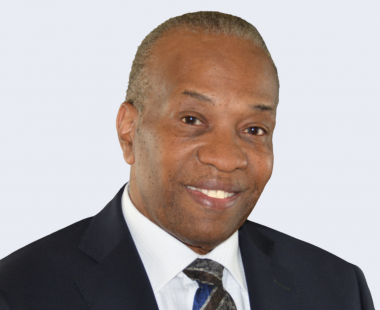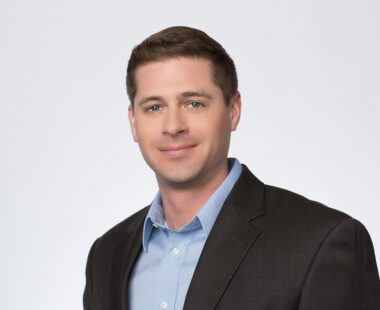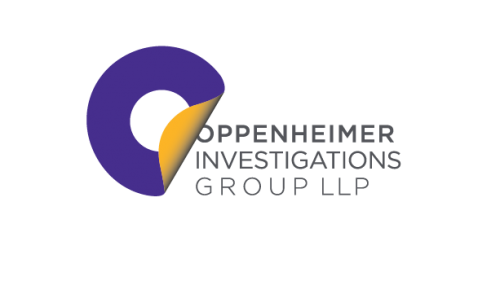
I’ve known Ken Hawkins for more than 30 years. He has been my trainer, my mentor, my friend and he has mediated my own workplace and family disputes. I know no one else who can mediate across racial, gender, religious, ethnic and social class lines as effectively as Ken can. He brings a rare combination of compassion, deep listening and gravitas to his work. During these turbulent times we have recommended Ken to clients who have benefitted from his wisdom and experience.
Our wonderful office manager, Cody Holtz, remarked that every time he spoke with Ken he was sorry when their call ended. I feel the same way so I asked Cody to have a conversation with Ken, and share it. What follows is a thought-provoking discussion on how we approach conflict. I hope you enjoy this as much as I did.
![]()
Ken Hawkins — “How we approach conflict”
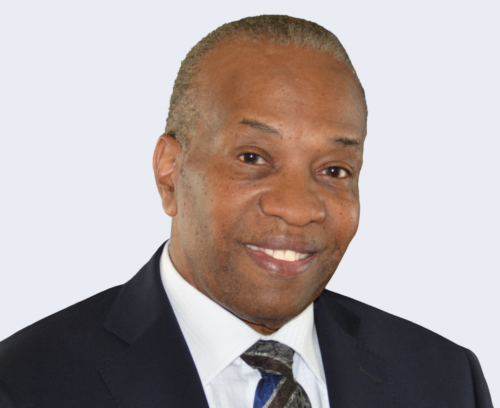 OIG: How did you get into mediation work?
OIG: How did you get into mediation work?
KH: I was in the right place at the right time. I came to San Francisco in 1977 and was one of the first staff members at the San Francisco Community Boards. It was a great organization, founded by Ray Shonholtz, an attorney who was a conflict-resolution theorist and practitioner. He had this idea that people in the neighborhoods could serve as mediators. This was based on African moot courts, where tribal chieftains who had a vested interest in the villages, would sit and listen to the concerns of the people. They would render their opinions but it was based on care and concern.
Ray thought that people in neighborhoods had the same kind of concern for their community and the same skills and abilities, if they were put into practice. Ray believed that police were the primary resolvers in the communities, and that people gave up their power and their authority to the police. And the police, of course, couldn’t do anything until after a crime had been committed. In the meantime, people watched hopelessly as situations began to escalate. This created a mindset that was not helpful and not healthy. We thought, “Why not empower community members to do the work?”
For me, this was like a cultural revolution. The mediators acted as wise counselors who cared about the community and about the people bringing their disputes. We got to work with people and show our confidence in them, that they had the abilities to help people in their communities to address conflict. And who better than they, who lived in the community, who shared the concerns of the community – who would be better than they to be conflict remediators?
We began training people, and the training was wonderful. It brought together a wide range of people from doctors and professors to janitors and car mechanics, mothers, fathers, people from all kinds of diverse backgrounds. These different perspectives gave a more rich experience in addressing the conflicts. This had a certain kind of magic. There was a lot of listening and validation, which people really needed.
And a lot of the conflicts got resolved. Initially, we were dealing with barking dogs, parking, boundary disputes, noise. But the more success we had, the more interesting and complex the conflicts became. Even where we started working with people and their relationships – they trusted us with that. And even though these conflicts may have seemed simple, they were the kinds of things for which police were being called.
A big part of mediation is looking at relationships. The truth of the matter is people in conflict, they’re in a relationship, like it or not. It just may be a conflict relationship.
OIG: You started out with these smaller issues, but having this panel of people and training them, did you reach a point where they didn’t need to come to you with their grievances? You’ve taught them these mediation skills, and now they can do it themselves?
KH: We continued to offer ongoing trainings and support but we saw how the trainings and the successful mediations led to stronger relationships within the community. These processes are so important. We all need processes in place that can draw us together as people. We see some of the events that are going on in the world today and in our country in particular, and it’s got us fragmented, it’s got us seeing each other more adversarially than ever before.
OIG: So how do we begin to bridge these divides?
KH: We need structures and ideologies that convey how we depend on one another. Right now it appears that different mindsets – Republicans, Democrats, and Independents – cannot get along but in fact when I started doing community mediation work, we accepted the fact that people saw things differently. People weren’t demonized for having a different point of view. We need to set in place processes that pull us together, that encourage us to rely on one another. This has to rest on a foundation of it being okay to think differently. We don’t have to be enemies simply because we see the world differently. We try to figure out what we have in common, what can we build on that will allow all these different people to live together respectfully. It’s not like you meet the challenge and it’s over. It requires continuous work.
OIG: It seems a key part of the conflict-resolution process is each party being heard. Even if they don’t get the outcome they hoped for, at least they were heard and maybe understood.
KH: Definitely. One of the most important training approaches is understanding what you bring to the table as a mediator. A mediator has to stay focused on how best to help those in conflict. They’ve got to become the priority. What they’re saying is far more important than a mediator’s opinion or the need to be in control.
Mediators need to learn how to listen – how to recognize what people in conflict are expressing. And to make sure you’re not getting in the way.
OIG: How do you approach a mediation when one side aligns with your own experiences or you recognize your own biases in a situation?
KH: This happens a lot. But the more experience you have, the easier it is for you to recognize a bias in yourself. We all have our inherent biases. Of course I believe mine are better than yours. (Laughs.)
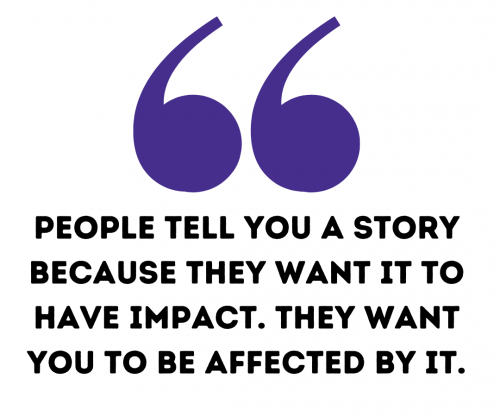
You learn with each mediation. Early in my mediation career, I met with a person having a dispute with a neighbor. She was telling me about this neighbor, this evil neighbor, who was one of the most horrible persons in existence. I’m listening to her say this and thinking I can’t wait to go meet this person, and maybe even give them a piece of my mind.
When I met with the neighbor, they were smaller than I thought they would be, and a lot more gentle and soft-spoken. This moment has stayed with me. You realize that when you hear a story it is not the story – it’s just the first account. It’s not an objective view.
You learn over time as a mediator that there’s at least two sides to every story. If you don’t remember this, you wind up being ineffective. Your own biases can render you unintelligent and unskilled.
People tell you a story because they want it to have impact. They want you to be affected by it. People also would love to be given the chance to self-correct, if they can. So we ask questions that allow them to say who they are and to explain their best intentions. Any time one of the disputants talks during mediation, they are really speaking to the other party. I’m just the conduit through which the other person hears.
OIG: I know you are a jazz musician. You’ve talked about how your training as a musician makes you a better listener and a better mediator. How does that work?
KH: I would have to say my most important instruments as a mediator are my ears and my heart. I think my years of working as a musician helps me gauge the rhythm and pace of each mediation. Knowing when to speak, when not to speak – there are times when silence is magical and you don’t have to fill that silence with notes (or words).
There are laws and rules to music, and a structure. Understanding the structure in music can help you feel the structure and pace in a mediation. You can learn this even if you’re not a musician. You’ve got to be sharp enough as a mediator to recognize rhythm and pace. You have to structure the interview to give each person equal airspace. I also make sure that each person can speak without being interrupted. That is very important.
OIG: Clearly part of what makes you such a great mediator is your passion for it. What is your favorite part of this work?
KH: I think it’s helping people to address their conflict. It comes from a fundamental belief that people want things to work. A lot of people, if given the opportunity, will resolve a conflict themselves. My favorite part is bringing together people who are entrenched – emotionally, positionally – and to help them go through this process that ends up being a transformation.
You can watch as people move through this process and feel the moment when there’s been an emotional resolution. This is very rewarding.
OIG: How have workplace conflicts changed since you’ve been doing this work – and especially in the last few years?
KH: I think because there’s a consciousness around race right now, people are a lot more sensitive. These discussions we’ve been having about racial justice have been extremely important. Even in workplaces, people are a lot more aware.
The need for healthy conflict-management processes is more important now than ever. In my work as an organizational consultant and coach, I tell managers to expect conflict. It’s natural. It’s going to happen. The type of organization you’re in will determine what kinds of conflicts you will face. The structure of an organization also affects the type of conflicts that will arise.
I wouldn’t frame conflict as a novelty. This idea that you shouldn’t have conflict is not reasonable. Conflicts are a common occurrence and there are some conflicts you actually want.
It’s important to use trainings to prepare for conflicts and also to look at an organization’s history to see what’s been learned through past conflicts. Learning is a part of an organization’s culture. You can distill what you learn to apply those lessons practically in your daily interactions.
OIG: Let’s talk about that. How do you apply what you have learned through your work as a mediator?
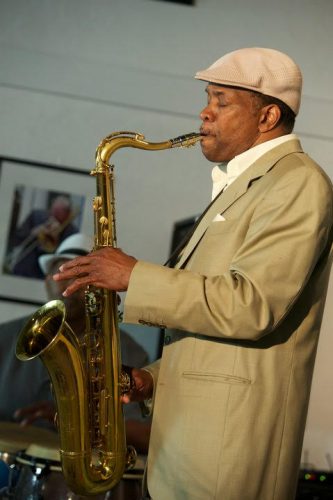 KH: I think it comes down to one question. In every mediation, whether it’s in the workplace or in our communities, we are really asking, “Who is worthy of tolerance?” This is a significant question. We should consider a good long time before deciding that someone is not worthy of tolerance.
KH: I think it comes down to one question. In every mediation, whether it’s in the workplace or in our communities, we are really asking, “Who is worthy of tolerance?” This is a significant question. We should consider a good long time before deciding that someone is not worthy of tolerance.
We have become alienated from one another. The discussions that have taken place are important but we need to find processes for training, find ways to reach out within the community. The first consideration is “How tolerant are we going to be?” That leads to the question, “Who will we tolerate and who won’t we tolerate?” And there are some things that are destructive and dangerous. We have to be willing to talk about those things as well, and address them.
In the part I play, I certainly want to demonstrate my humanity. As somebody who wants to touch lives in the best way that I can, I want to be as respectful as I can be. This is my work – I’m there to help people with specific types of issues but I bring my humanity and who I am with me, and try to do the best I can.
I want to encourage people toward something better. I want to build on our relationships. And I want to say to organizations there are things that can be done to handle the conflicts more effectively. You can work them through. But we can better prepare ourselves to handle the conflicts as they come up. I don’t know if I answered your question.
OIG: You did. That was very insightful, thank you. I know if I ended up in conflict resolution, I’d be thrilled to have you be the one walking through the door.
KH: Thank you. I really welcome the opportunity to work with people.
OIG: If someone is interested in becoming a mediator, what is a good first step?
KH: Look around in your community. Find out if there are community or professional conflict-resolution organizations that you can be a part of. Volunteer. This is a good way to get some experience. There are also trainings that are offered (see a list of trainings below).
It’s also important to do some self-awareness work. Anything that can help you explore and be clear on who you are and what you bring to this work will help you grow as a mediator.
Ken recommends volunteering or signing up for mediator training. These organizations offer a non-caucus training model that is well suited to workplace mediation:
San Francisco Community Boards
The Center for Understanding in Conflict
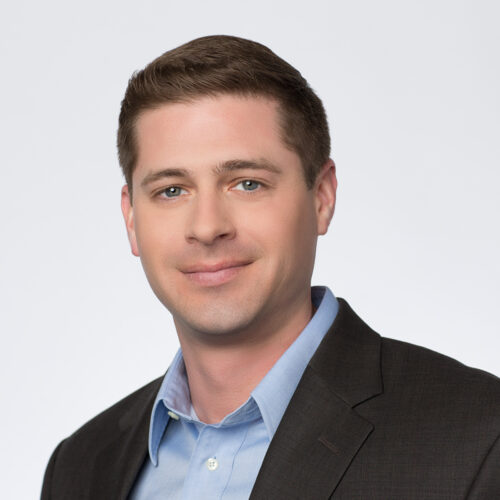 By Cody Holtz
By Cody Holtz
Office Manager
cody@oiglaw.com

